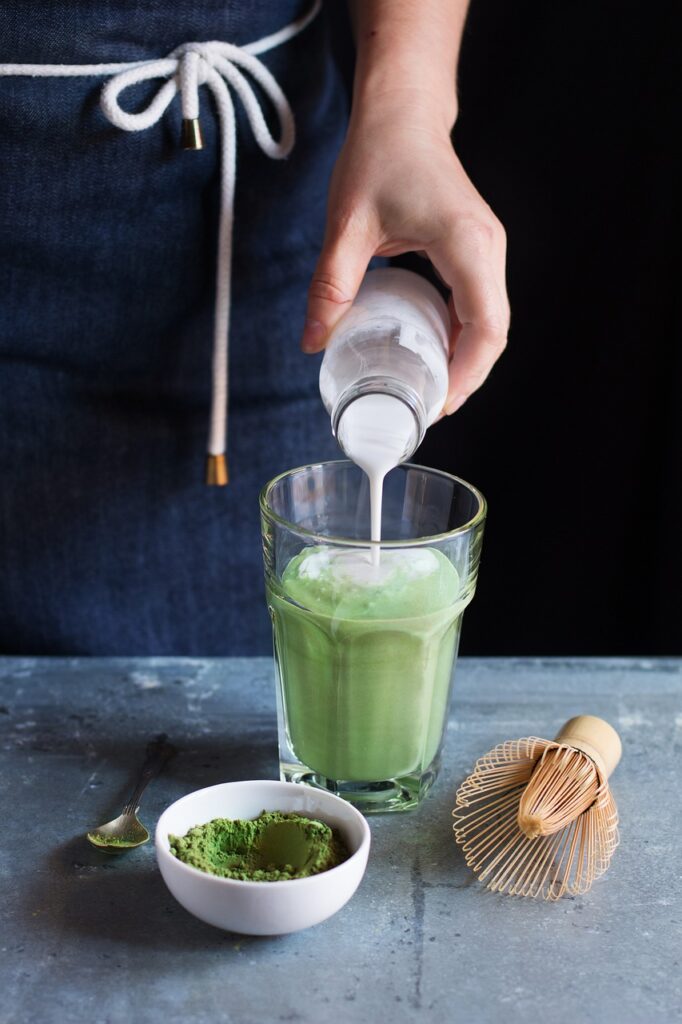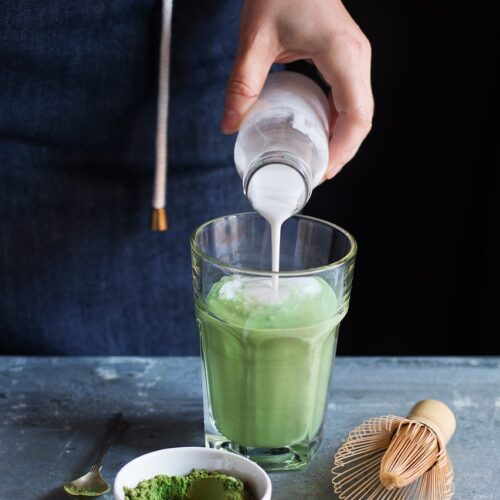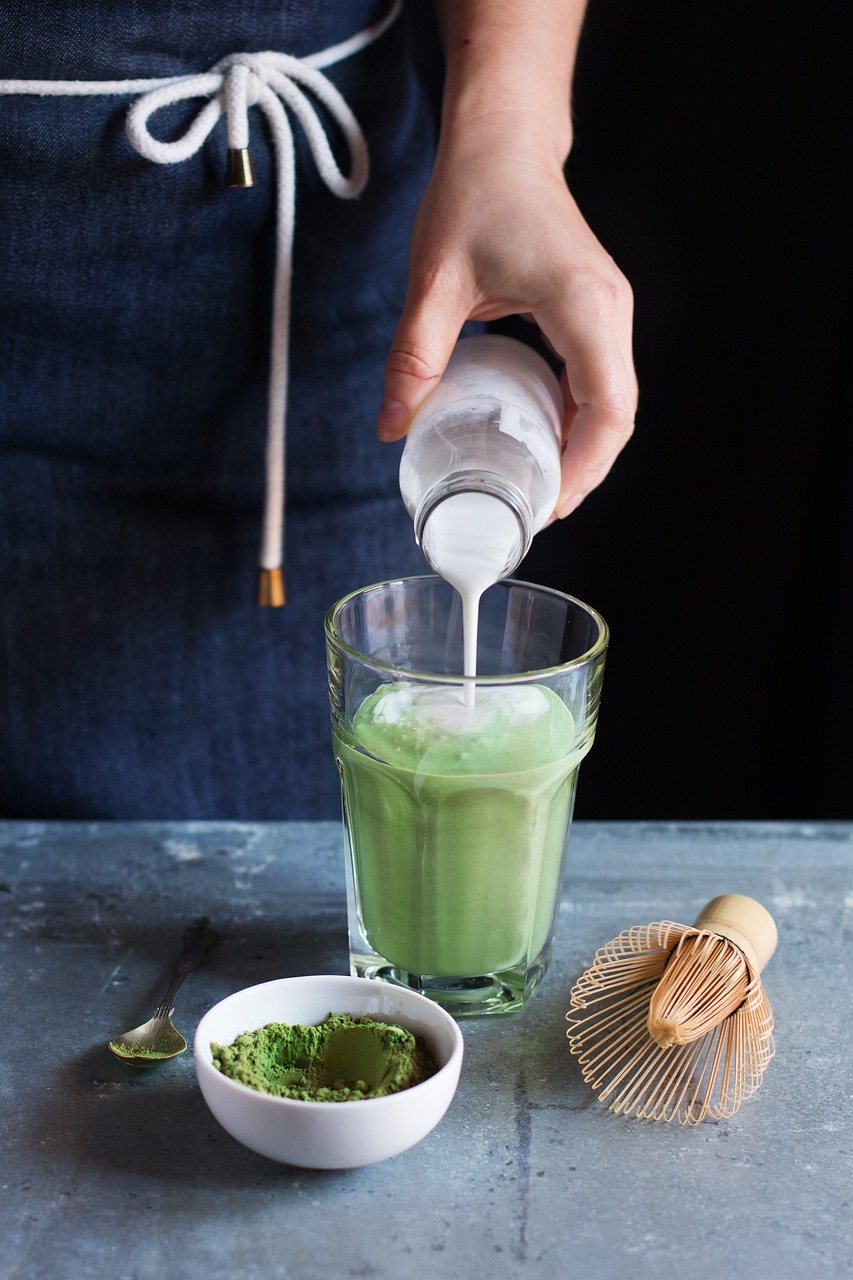Matcha green tea powder, along with milk, is blended to create a creamy, frothy beverage known as a matcha latte.It can be served hot or iced and often includes a sweetener like honey or syrup.

Ratings 05

What Is The Matcha Latte?
01. Key Features
- Matcha is a finely ground powder made from specially grown green tea leaves.
- The drink blends the smooth texture of steamed or frothed milk with the earthy, umami-rich flavor of matcha.
- It is well-liked for its health advantages, energizing qualities, and vivid green color.
Advantages Of Matcha Lattes For Health
In addition to being delicious, a matcha latte is a great source of antioxidants and other nutrients. The following are the main health advantages:
01. Rich In Antioxidants
Matcha is loaded with catechins, especially EGCG (epigallocatechin gallate), which help fight free radicals and reduce cell damage.
02. Boosts Energy And Focus
Contains moderate caffeine, along with L-theanine, an amino acid that promotes calm alertness and mental clarity—offering a smoother, longer-lasting energy boost than coffee.
03. Supports Metabolism
EGCG in matcha may help enhance fat burning and improve metabolic rate, especially when combined with exercise.
04. Detoxifies The Body
Matcha is grown in shade, which increases chlorophyll levels—a natural detoxifier that helps cleanse the body of toxins and heavy metals.
05. Strengthens The Immune System
Contains vitamins A, C, and E, and minerals like potassium and iron, which support overall immune function.
06. Promotes Heart Health
Regular consumption may help lower LDL cholesterol and reduce blood pressure, contributing to better cardiovascular health.
07. Supports Relaxation
Thanks to L-theanine, matcha promotes a calm but alert state, reducing stress without causing drowsiness.
08. Note
The healthiness of a matcha latte can vary depending on the type of milk and amount of sweetener used. Opt for unsweetened plant milk and minimal added sugar for the best benefits.
Tips For Making Matcha Latte
Whether hot or iced, a great matcha latte depends on technique and ingredients. Here are some pro tips:
01. Use High-Quality Matcha
- Choose ceremonial grade for the best flavor (bright green, smooth, less bitter).
- Culinary grade is fine for lattes but may taste slightly more bitter.
02. Sift The Matcha Powder
- Always sift the matcha before whisking to prevent clumps and ensure a smooth drink.
03. Use The Right Water Temperature
Water must be warmed to 75–80°C (170–175°F). Matcha could become bitter if it is charred by boiling water.
04. Whisk Properly
- Use a bamboo whisk (chasen) or small frother.
- Whisk in a zigzag (M or W motion) to create a smooth, frothy layer.
05. Froth Your Milk
- Froth milk using a frother, handheld whisk, or by shaking it in a closed jar after heating.
- Oat milk or almond milk froth well and add a creamy texture.
06. Sweeten Wisely
- Enhance the flavor without overpowering the matcha by trying to add stevia, honey, or maple syrup.
07. Adjust To Taste
- Start with 1 tsp matcha and change the level to suit your style and strength.
08. For Iced Matcha Latte
- Mix matcha with hot water first, then pour over cold milk and ice. Don’t skip the whisking step!
FAQ Matcha Latte
Here are some frequently asked questions about matcha lattes:
01. What Does A Matcha Latte Taste Like?
The milk’s creaminess counters a matcha latte’s subtle sweet taste, astringency, and grassiness. Matcha of superior quality will have a sleeker, less bitter flavor.
02. Is A Matcha Latte Healthier Than Coffee?
Yes, for some people. Matcha has less caffeine than coffee but includes L-theanine, which promotes calm focus.It may also decrease jitters and is full of antioxidants.
03. Can I Use Any Green Tea Powder For A Matcha Latte?
Not at all. A particular kind of green tea powder called matcha is produced from leaves that are grown in shade. Regular green tea powder won’t offer the same taste or health benefits.
04. What kind Of Milk Works Best In A Matcha Latte?
You can use dairy milk or plant-based options like oat, almond, soy, or coconut milk. Oat milk is especially popular for its creamy textureB
05. Can I Drink Matcha Latte Every Day?
In moderation, yes. In general, 1-2 cups per day are safe and beneficial. Avoid overindulging because some low-quality matcha may contain lead and caffeine.
06. Is A Whisk Necessary To Make A Matcha Latte?
In agreement. Shake the matcha with water in a jar, use a blender, or use a milk frother. Although it is customary, a bamboo whisk (chasen) is not necessary.
07. Is It Okay To Drink Matcha Lattes While Pregnant?
It’s best to limit matcha consumption during pregnancy because it contains caffeine. For individualized guidance, always seek your physician’s advice.

Matcha Latte
Ingredients
- 1 tsp matcha green tea powder (ceremonial or culinary grade)
- 2–3 tbsp hot water (not boiling, about 80°C or 175°F)
- 1 cup milk (dairy or plant-based like almond, oat, or soy)
- 1–2 tsp honey, maple syrup, or sugar (optional, to taste)
Instructions
- Sift the matcha into a mug or small bowl to remove lumps.
- Add hot water (not boiling) and whisk vigorously in a zigzag (M or W) motion until smooth and frothy using a bamboo whisk (chasen) or small regular whisk.
- Heat the milk in a saucepan or microwave until warm but not boiling. Froth the milk using a frother, whisk, or by shaking in a jar with a lid.
- Pour the milk into the matcha mixture slowly, holding back the foam with a spoon. Then spoon the foam on top.
- Sweeten to taste with honey, maple syrup, or your preferred sweetener.
-
Matcha Latte
Matcha green tea powder, along with milk, is blended to create a creamy, frothy beverage known as a matcha latte.It can be served hot or iced and often includes a sweetener like honey or syrup. Ratings 05 What Is The Matcha Latte? 01. Key Features Advantages Of Matcha Lattes For Health In addition to being…


Leave a Comment